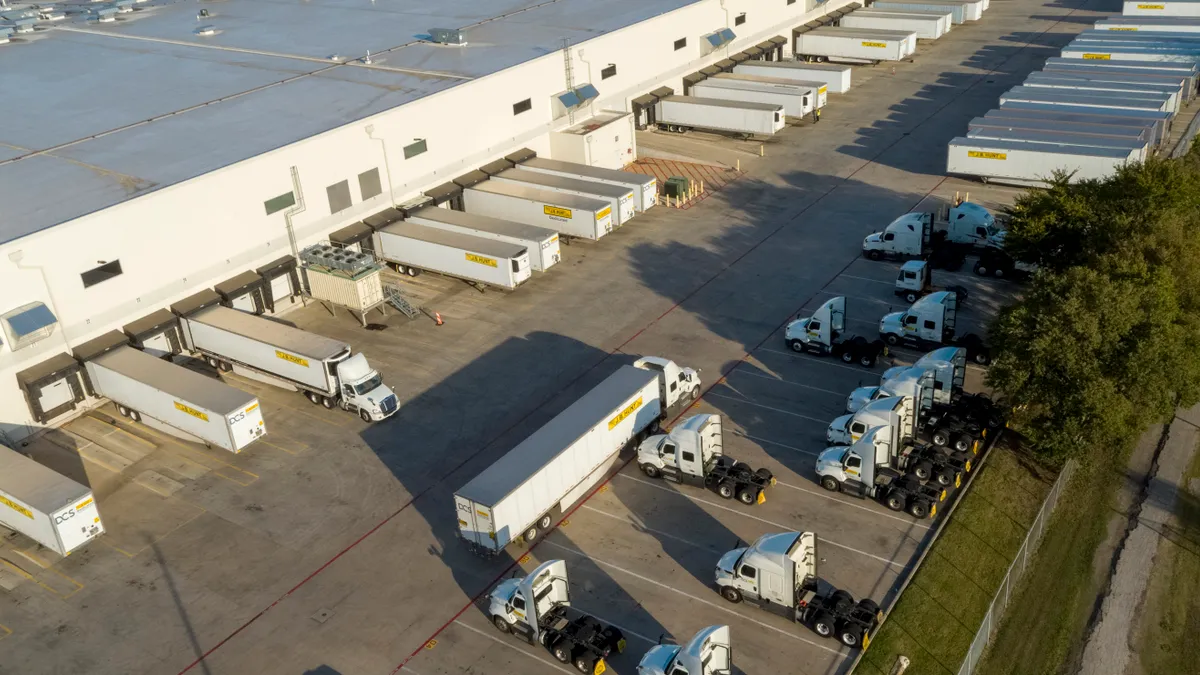Dive Brief:
- J.B. Hunt executives said in an earnings call trucking is in the midst of a “freight recession,” which caused its operating revenues to fall 7% to $3.23 billion in Q1.
- The company saw volumes plummet across the board. J.B. Hunt reported a 25% volume decline in its integrated capacity solutions segment, a 5% drop in intermodal and 17% decline in final mile services in a Monday press release.
- Executives had previously forecast a freight rebound by the second half of 2023. But their tune changed in the Q1 call, as they said recovery appears less certain now due to cooling economic conditions.
Dive Insight:
J.B. Hunt continues to chase opportunity despite a challenging freight environment.
"We can do this by providing cost savings opportunities by converting on highway freight to intermodal, designing a highly engineered and efficient solution in our dedicated segment, leveraging vast amounts of market competitive capacity sourced on J.B. Hunt 360 or by providing best-in-class service as one of the largest final mile providers in North America," J.B. Hunt President Shelley Simpson said on the call.
While the company blamed declining imports for its lower intermodal volume in Q1, executives remained optimistic about the segment’s potential growth.
“Our network and service offering is a coil spring that can handle significantly greater volume today and unlock a lot of value for our customers and our company,” said Darren Field, EVP and president of intermodal. “We have the people, the (drayage) capacity, and the containers that could handle upwards of 15% to 20% more volume today.”
Driving more business to intermodal and its other segments requires more freight in the market, which means waiting for imports to increase because of improving economic conditions, executives said.
CEO John Roberts said it is “not really a question of if the freight demand will come back to normal. It’s really a question of when.”
He told investors the executive team has been through up and down freight cycles. Those experiences guided strategy to position the business to weather downturns but also points to when to be cautious as it relates to market outlook for the remainder of the year.
So when the turnaround arrives, the company will respond, according to Roberts.
“It's just a question of when and what position will we be in when our customers start ringing our phone again in ways that they have in the past,” he said.












